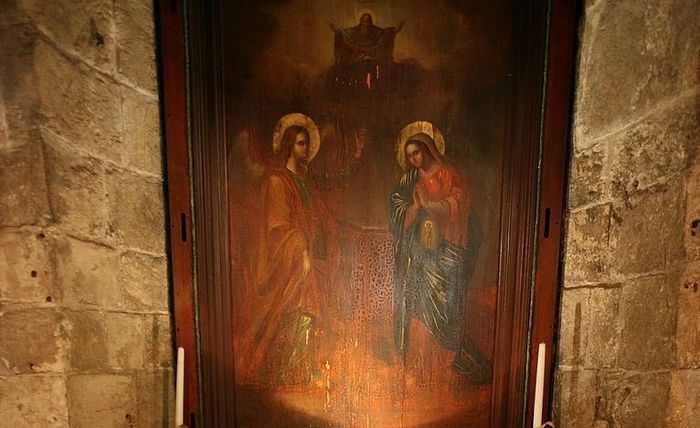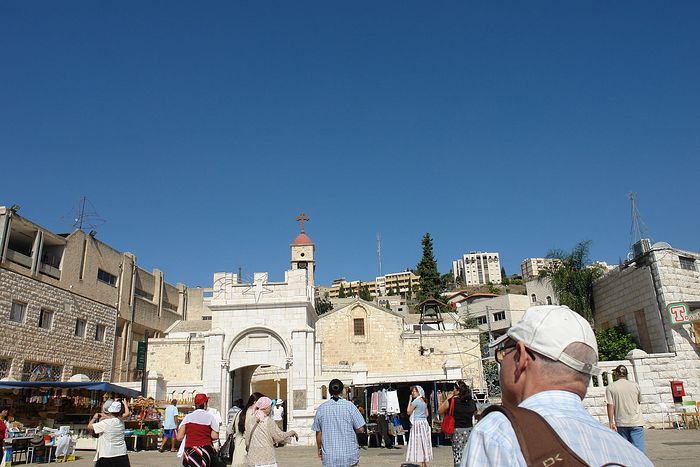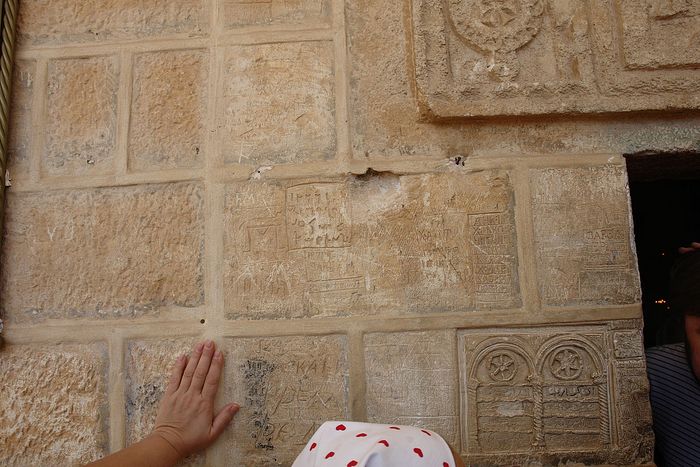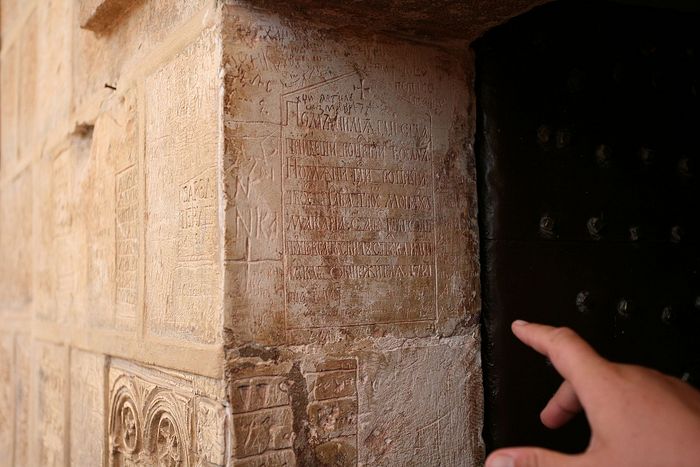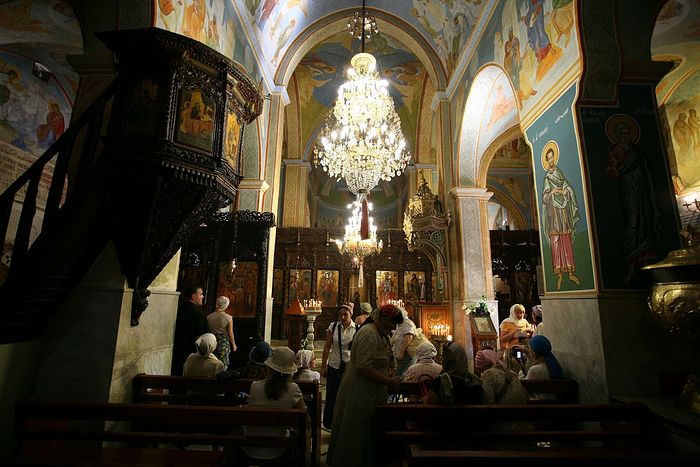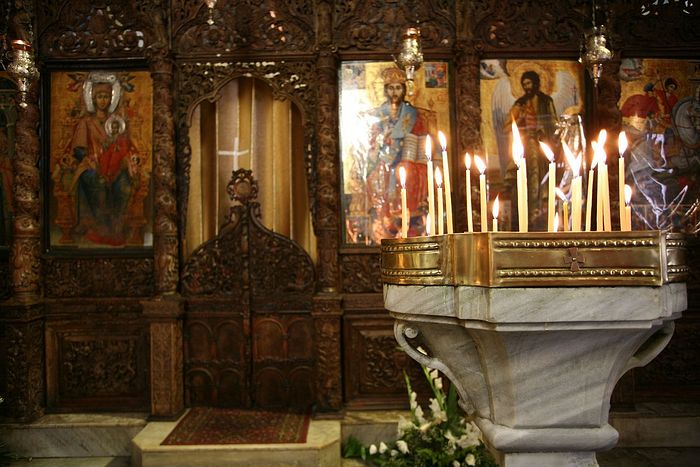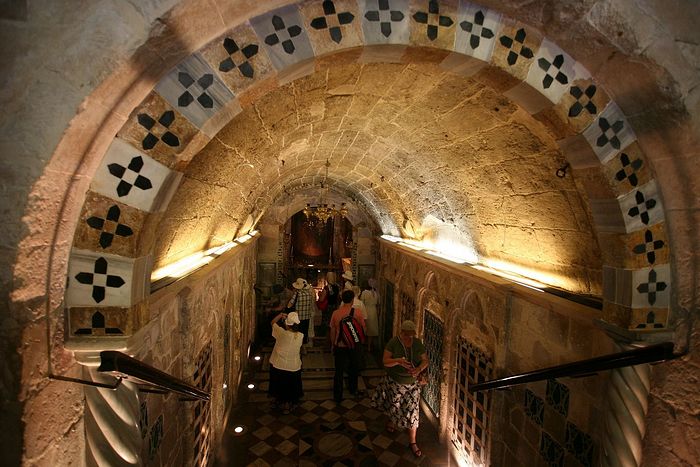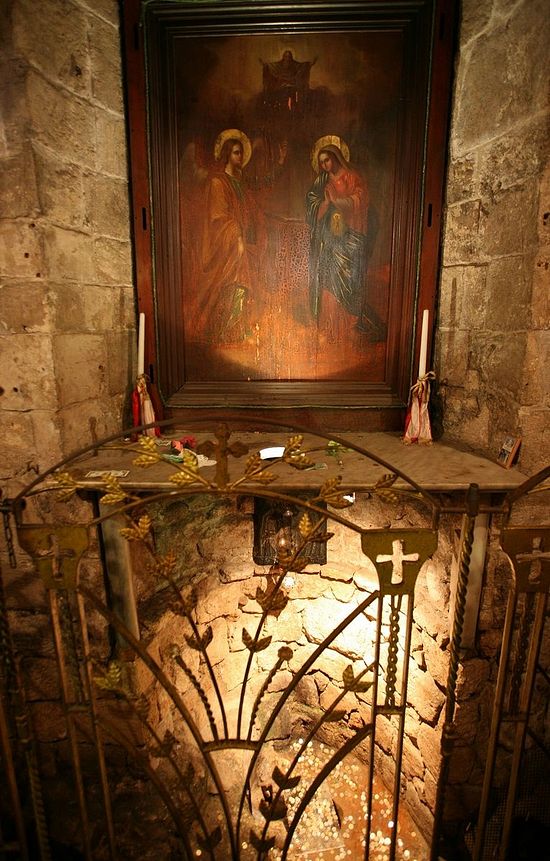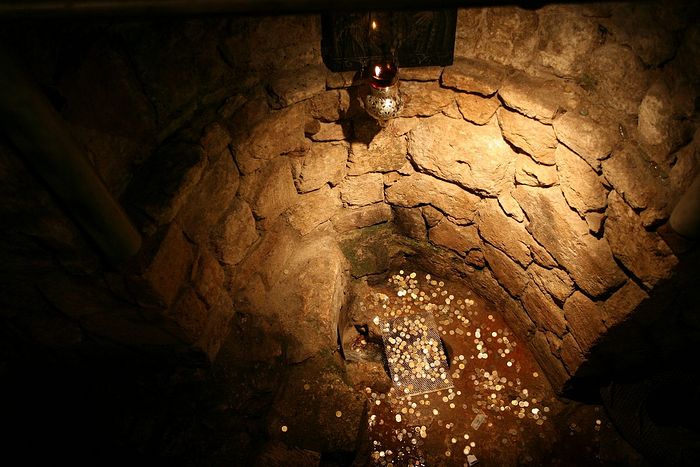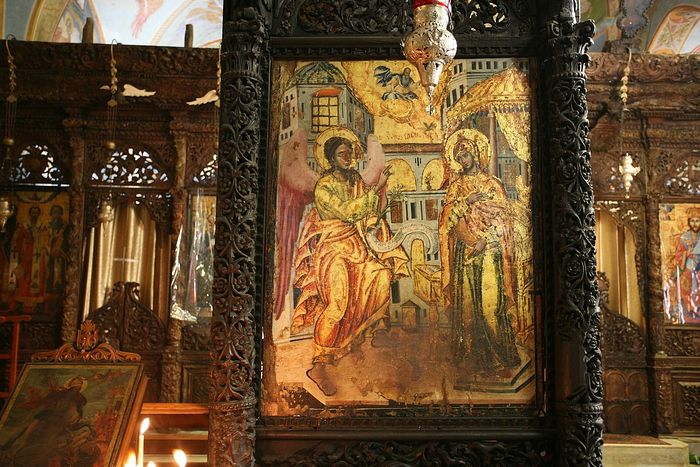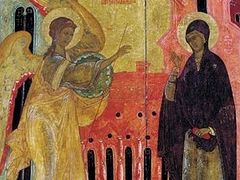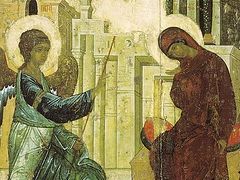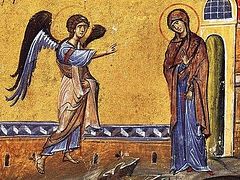These notes on the Annunciation and the city of Nazareth were translated from the blog of Priest Konstantin Parkhomenko.
Dear brothers and sisters, I offer you some of my reflections on the feast of the Annunciation.
Over and over again I return to Nazareth—today a noisy and hectic Arab city—in my mind. But this fact by no means prevents me from seeing and feeling what it was 2,000 years ago, when the Angel descended from heaven into this city.
Let us touch upon this great mystery and joy—the Incarnation of God.
The history of humankind is the history of the development of sin in the world. But the dark line has been opposed by another, light line. The latter is a line of the best people in the world who devoted their lives to resisting sin and evil, who hungered and thirsted for the Truth of God.
However, people understood that it was impossible for them to overcome sin and evil without outside help. Human nature had grown so weak over thousands of years of slavery to sin that people were unable to conquer this determinism and inclination to sin on their own. And the human race had been waiting for the Savior!
Both the Hebrews and pagans were waiting for the Savior. Disappointed in its religious delusions and awfully tired of its doubts and unbelief, the pagan mind of the time just before the Coming of Christ was frantically and passionately seeking for One, True God Who was to be praised. And, having grown weary of the search, it seemed to have stopped deep in thought, trying to find an answer to the frightening question: where is the truth? And does it exist?
The conscience of pagans, which was buried by refined iniquities, forcibly asserted its right to speak and revealed the abyss at the edge of which they stood to their awakened consciousness, making them moan loudly under the burden of sins and ask themselves in hopeless anguish: where is salvation and is it achievable?
According to evidence presented by the Roman historians Tacitus and Suetonius, in the days immediately prior to the Incarnation of Christ it was rumored among the Romans and other pagan peoples that a king was to appear in the East and conquer the whole world. Roman poets sang of the long-expected appearance of the wonderful liberator. The poet Virgil celebrated the infant whose coming would mark the restoration of the ancient golden age.
The most intensive messianic expectations were in Israel. The Sibylline Books [a collection of oracular utterances in Greek.—Trans.], written shortly before the Birth of Christ, said that a great king was to come and put an end to all wars, while the pagans who would rise against Jerusalem would perish. Meanwhile, the Qumranites, Jewish hermit-like people, drew up a detailed secret plan of their attack on the enemies of God with maps so that they could stand under the banner of the Messiah immediately after his coming.
And it was then that the Lord sent His Angel to the city of Nazareth. This is how St. Gregory the Theologian described the beginning of the Annunciation: “Having called Gabriel, one of the most powerful angels, for the annunciation of the great mystery of the Incarnation of the Son of God, the Lord said to him: ‘Gabriel, go and be the servant of the awesome and secret mystery and serve the miracle. Driven by love, I hurry to find Adam who has gone astray. Sin has made man whom I created in My image ugly, corrupted what I created with My hands, and damaged the beautiful work that I created. Paradise is deserted, the Tree of Life is guarded by the flaming sword, and the place of delight and bliss is shut up. I want to show mercy to the miserable man and tie up the enemy. Go to the Virgin Mary… Go to the Sanctuary that has been prepared for Me.’” The story of the appearance of the Angel to Mary is narrated in the Gospel of Luke. Why did Luke alone narrate the Annunciation to Mary? There are several reasons for this. According to the holy evangelist himself, he decided to write his Gospel …having had perfect understanding of all things from the very first (Lk. 1:3). So in his version of the Gospel the apostle used the accounts of the lives of the Theotokos and the parents of St. John the Baptist that were known in his days.
According to ancient traditions, Apostle Luke (he was a disciple of Apostle Paul) met the Mother of God in person. In this case, he may have heard all of this directly from Her. Besides, Luke the Evangelist was a Greek. Perhaps this accounts for the fact that he paid more attention to the ministry of women than the other evangelists. Like Islam, Judaism is a religion which encourages male dominance. For instance, even today every morning each male adherent of Judaism thanks God for not making him “a pagan, a slave, or a woman” in Shaharith [a mandatory Jewish morning prayer which lasts between thirty five and fifty minutes.—Trans.], whereas every Jewish woman thanks Him for creating her “according to Thy will”.
Luke tells us that women were the first to financially support Christ’s disciples in their ministry from their own means. In this group of women he mentions …Mary called Magdalene…, And Joanna the wife of Chuza Herod’s steward, and Susanna, and many others, which ministered unto Him of their substance (Lk. 8:2-3). It was Luke who mentioned the group of women who followed Christ on the way to Golgotha (cf. Lk. 23:49), and the female disciples who came with Him from Galilee, followed after, and beheld the Sepulcher, and how His Body was laid (cf. Lk. 23:55). Luke recounts that the women prepared spices and ointments and brought them to the Sepulcher (cf. Lk. 23:56) and that the women (and not the men) were the first to recognize the Resurrected Christ (cf. Lk. 24:1-10). In his Book of Acts where Apostle Luke describes the life of the first Christian community he writes that the apostles continued with one accord in prayer and supplication, with the women, and Mary the Mother of Jesus, and with His brethren (Acts 1:14). Luke alone paid close attention to the place and role of women in the Gospel and the life of Jesus Christ on earth. That is why he gave much attention to Mary the Mother of the Savior as well. He collected traditions associated with Her and may have spoken with Her.
In the fourth century, a church was built on the site of the meeting of the Virgin Mary with the Angel by the city well. This splendid church which held a holy well with very cold water was mentioned by the Russian pilgrim Abbot Daniel who visited Nazareth in 1113. However, this church soon was desecrated. Nazareth was twice seized and sacked by Turks. Saladin’s forces took this city in 1187. Forty years later the city was returned to Christian control by mutual agreement. In 1263, Nazareth was captured and completely looted by the army of Sultan Baybars. The Christian residents who refused to convert to Islam were massacred. In 1336, Turks converted the vandalized Church of the Annunciation with its holy well into a slaughter house and carrion yard. Soon the church was completely destroyed and reduced to a pile of stones, covered with grass and moss.
The church was restored in the late eighteenth century: the water of its holy well is again sweet and ice-cold, and the stones of the former magnificent cathedral were used to build a new small Orthodox Church in honor of the Archangel Gabriel. On the photo we stand beside this church which has the city holy well inside it.
Graffiti scratched into the walls by pilgrims from all over the world.
These graffiti were left by a Russian pilgrim in the eighteenth century. It should be noted that at that time this practice was considered pious and not inappropriate, as in our days.
Here is the Church of the Archangel Gabriel with a holy well inside. Today it belongs to the Orthodox Church of Alexandria.
The Royal Doors and candles lit by pious pilgrims who have come to venerate the site of the Annunciation.
We go down the steps to the holy spring which is situated in a special niche. The city keeps rising due to its “cultural layer”1. The church was built at the level of the current cultural layer, while the cultural layer of the time of the Theotokos is lower—it is where the spring flows.
The holy well, protected by a decorative grille, from which the Mother of God and the Savior Himself may have drunk. According to ancient tradition, it was by this well that the Archangel Gabriel reputedly appeared to the Theotokos.
The holy well of Nazareth still runs. Its water was diverted by a pipe to a higher level to offer convenience for pilgrims. Thus we can draw and drink this water too)
The ancient icon of the Orthodox Church of the Annunciation in Nazareth.
Stalls, souvenirs… Undoubtedly, goods of the same kind were sold in this square during the time of the Mother of God. A square with a well was the center of any ancient town’s life.

